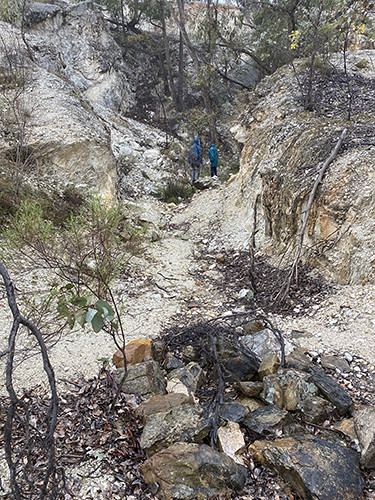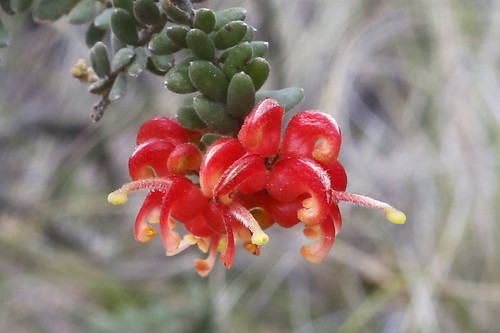At the junction of the Old Coach Road and the Fryers Ridge Road there’s an old fenced area, about 200 metres square. The fence isn’t in bad shape, but has been knocked down in a couple of places by falling tree branches, and tussocks in the enclosed area are clearly being grazed. Otherwise the vegetation in the enclosure is in pretty good shape.
Who put Who put up the fence? When?

This old metal tag is a sign that someone once took great care to identify plants in the Fryers exclusion plot…and the patch of Beard Heath it marks still survives, though a little bedraggled.
There have been a few initiatives in the past to protect patches of our bushland from overgrazing, mainly by sheep. One such was a proposal by Castlemaine Rotary in 1936 to establish wildflower sanctuaries around the shire. It seemed to run aground in the face of reluctance on the part of foresters to do anything about it. Could this fenced off area be the result of a community initiative which did get somewhere? We’d be interested in any informed answer.






















 Click on image for info/order page
Click on image for info/order page Click on image for info/order page
Click on image for info/order page Click on image for info/order page
Click on image for info/order page




















